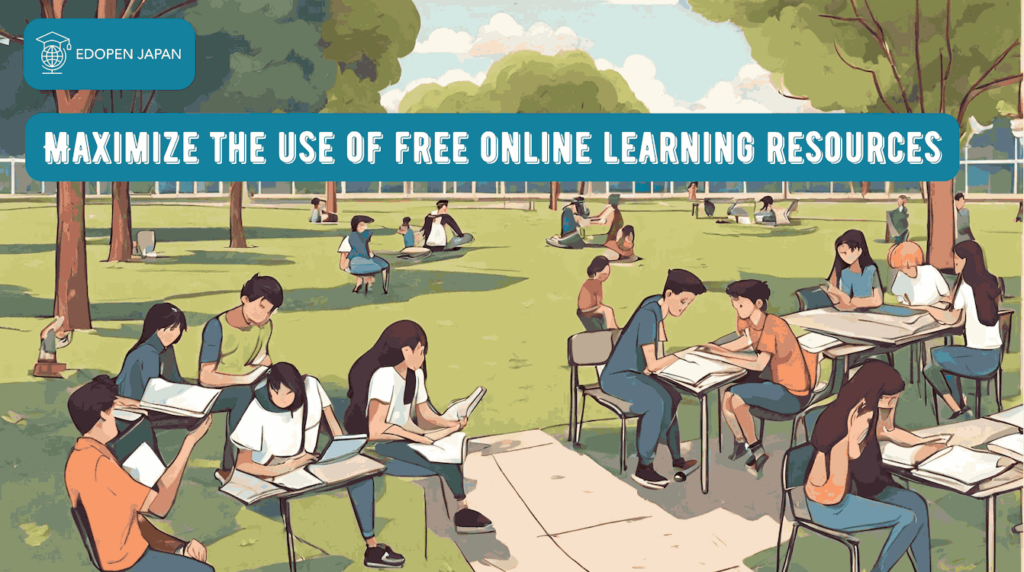Japanese is a significant language for education and communication, second only to English in global importance. It is vital for Japan’s growing economic and industrial position in today’s globalised world.
If you wish to learn the language, it may be unclear where one should begin. However, foundational steps for learning any language, including Japanese, are essential.
Beginners may find learning Japanese challenging at first. This article will show you how to learn Japanese if you are a complete beginner.
This article will show you how to learn Japanese if you are a complete beginner. Nonetheless, I genuinely hope that this article proves helpful to you.
Contents
- 1. Learn Hiragana and Katakana
- 2. Learn the concept of Kanji
- 3. Learn Japanese grammar
- 4. Collect and use Japanese vocabulary
- 5. Learn Japanese pronunciation
- 6. Read easy Japanese news
- 7. Make Japanese learning journal as writing practice
- 8. Do speaking exercise
- 9. Join a Japanese learning community
- 10. Maximize the use of free online learning resources
- Conclusion
1. Learn Hiragana and Katakana

There are three different characters used in Japan known as Hiragana (ひらがな), Katakana (カタカナ) and Kanji (漢字). Beginners should focus on learning the basic and simplest of the characters, which is Hiragana.
Hiragana (ひらがな) is primarily used by native Japanese speakers, as it is a phonetic writing system made up of 46 characters used in the Japanese language.
Hiragana, the fundamental Japanese alphabet, is the initial letter used for reading Kanji, which is typically followed by Furigana. Furigana are little hiragana symbols put above kanji characters to aid with their pronunciation.
Katakana is a writing system in Japanese that is commonly used for foreign words, particularly borrowed from English. It’s also frequently used for scientific and animal names, as well as onomatopoeic words.
The pronunciation of katakana resembles that of hiragana, but the symbols differ. If you already know hiragana, you can usually learn katakana quickly.
2. Learn the concept of Kanji

What are Kanji (漢字)? Kanji (漢字) is single characters composed of radicals in Japanese. There are at least 2,207 kanji characters that are commonly used in Japan.
It is important for you to remember that the elements that make up kanji are radicals or 部首, ぶしゅ about 214 radicals) that combine each other to make up kanji and have a certain meaning.
In the most cases, by understanding the radicals, you can be much more effective at remembering kanji than just rewriting every stroke over and over. Then, the combination of 1 kanji with other kanji or hiragana will form one vocabulary.
3. Learn Japanese grammar

Many individuals believe that grasping the grammar of the Japanese language (文法, ぶんぽう) is hard. However, this is not entirely accurate. As long as you commence by learning hiragana, katakana, and gradually incorporate kanji, the process of learning Japanese grammar will not be challenging.
In learning Japanese grammar, there are usually 3 things that you should pay attention to:
- The definition or meaning of the word
- The situation when and where it is used
- The example sentences that you can use as a reference
Nowadays, you can find everything you need to learn Japanese from books, apps and different types of print or digital resources. All of them share the same idea.
Japanese grammar can also be learned via the JLPT level. The JLPT level is not only a learning guide, but also a way to measure your fluency in Japanese.
4. Collect and use Japanese vocabulary

The greater your knowledge of Japanese vocabulary, the more effortlessly you’ll be able to communicate. To become skilled in Japanese, it’s crucial to know a wide range of words. You should aim to learn at least 10,000 Japanese words for full Japanese fluency.
How to learn Japanese vocabulary, please look at the following 3 steps:
- Learn the kanji that make up the vocabulary
- Set concrete goals on how much vocabulary you need to learn every day
- Consistently repeat and apply the vocabulary that you have learned
- Read more articles, newspapers and others to increase your vocabulary
- Write if you find it difficult to remember
- Say the vocabulary over and over again with clear intonation
- Listen to the pronunciation of the vocabulary over and over again
Doing these 7 steps will improve your ability to master Japanese vocabulary and be able to remember it for long time.
5. Learn Japanese pronunciation

Learning Japanese pronunciation is not too challenging because it essentially involves combining a limited number of vowels according to the hiragana system. These syllables are comprised of concise vowel combinations, although each syllable has unique stress.
Nonetheless, beginners often make minor errors such as mispronouncing similar vowels or emphasizing incorrectly, which can lead to mispronunciation of words. But don’t worry, it’s perfectly normal!
You can master Japanese pronunciation by doing the following tips:
- Listen more and more
- Practice shadowing, echoing what native speakers say 1 or 2 seconds after the they starts
- Practice pronunciation by looking at the script
- Pronunciation practice without looking at the script
- Pay attention to the emphasis of each syllable
By consistently doing the 5 steps above, you can accelerate your mastery of Japanese pronunciation in a relatively very short time.
6. Read easy Japanese news

Doing so will help you to improve your reading comprehension, listening, and pronunciation. As a beginner in Japanese, your first task is to find the best learning resources available to you. So, if you want to take your language skills to the next level, we recommend starting with a diverse and interesting selection of Japanese newspapers.
Reading a Japanese newspaper can be a great way to develop your language skills. One option is to read articles in Japanese, including those provided by easy Japanese news sources.
Currently there are various sources that you can use both print and digital. One example is that you can read NHK News Web Easy and learn new vocabulary there.
7. Make Japanese learning journal as writing practice

As a beginner, to familiarize yourself with the Japanese language, writing can be a very powerful way. One way is to try writing a Japanese learning journal. Writing a journal in the learning process requires applying both sides of our brain to think analytically and think creatively at the same time.
According to some studies, journaling can even provide various benefits such as affecting your mood, reducing depression, and even improving your memory. This is very supportive of your learning process as a beginner to find your rhythm and build a habit of learning Japanese in a fun way.
Try writing and journaling your Japanese learning materials for the day. And reap the benefits later!
8. Do speaking exercise

With regular daily practice, you’ll become fluent in Japanese speaking faster by increasing your vocabulary and getting exposed to more phrases from what you hear or read. Although as a beginner, you might have some challenges, be confident that continuous practice will help overcome them.
There are many ways to improve your Japanese speaking skills, such as having conversations in Japanese on YouTube, taking online classes with Japanese teachers or finding a group of fellow learners to chat with and share tips.
Another option is to read Japanese material aloud with clear pronunciation and intonation repeatedly, allowing your voice and tongue to get used to Japanese pronunciation. Select the technique that works best for you and start practicing today!
9. Join a Japanese learning community

Continuing from before, it’s crucial for you to find the appropriate friends or teacher while learning Japanese. You can easily find Japanese learning communities nowadays on social media platforms like Facebook, Twitter, Discord, among others.
These communities frequently share their materials, experiences, impressions, and suggestions in the course of learning. Beginners like you, who are learning Japanese, can often find others in the same situation.
Don’t hesitate to explore and ask questions in the Japanese learning community. By doing so, you can gain various insights that will undoubtedly broaden your understanding and knowledge of Japanese language and culture.
10. Maximize the use of free online learning resources

Never worry if you can’t get into an official school to study Japanese intensively. Thanks to the internet that has broken down the barriers of access to information around the world. As long as you have internet access, you can access millions or even countless Japanese learning resources for free. I repeat, FREE! from various blogs, websites, YouTube and other learning platforms.
If you also have an extra budget, you can access premium teaching materials, but at a price that is relatively much cheaper than enrolling in an official language school.
We also have various recommendations for free Japanese learning resources such as Japanese learning apps, websites and others that are very powerful and completely FREE. Please click the button below to read the related article!
As long as you are respectful of your time, disciplined, focused and actively participate in the lessons, the sooner you will shed the title of “beginner” and move up to the “intermediate level” or even jump straight to the “advanced level” Japanese learners.
Conclusion
To sum up, let’s review the crucial aspects to begin studying Japanese as a novice. Please find a few of the points listed below.
- In learning Japanese, beginners must start with the basic and simplest characters, hiragana and katakana.
- Understanding the radicals of Kanji will help beginners to build the strong basic understanding in learning concepts of Japanese Kanji.
- Learn Japanese grammar from the basic is a must as the next step after learning hiragana, katakana and basic Kanji.
- Challenge yourself to collect and apply Japanese vocabulary.
- Try to learn Japanese pronunciation.
- Read easy Japanese news as the best Japanese learning resources.
- Create Japanese learning journal as writing practice and enhanced the memorization ability.
- Do speaking exercise as much as possible.
- Find and actively participate in Japanese learning community.
- Try to maximize the use of free online learning resources.
Do you have any additional comments or feedback about this article? If you have experience learning Japanese, we would appreciate it if you could share your thoughts in the comments section.
We value your input and suggestions for improving our future articles. Thank you for taking the time to read this.
We hope you find this article useful! Good luck with your Japanese studies!












